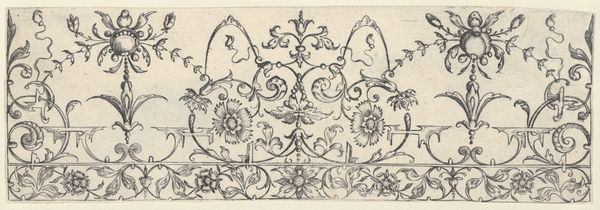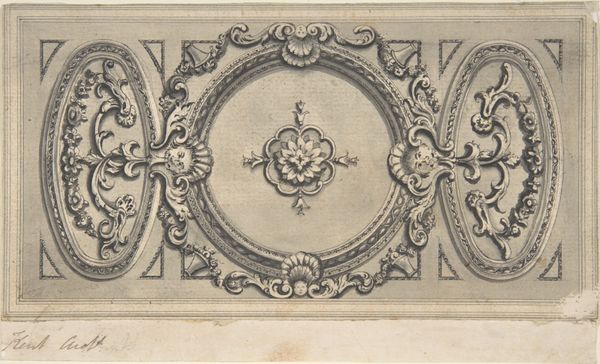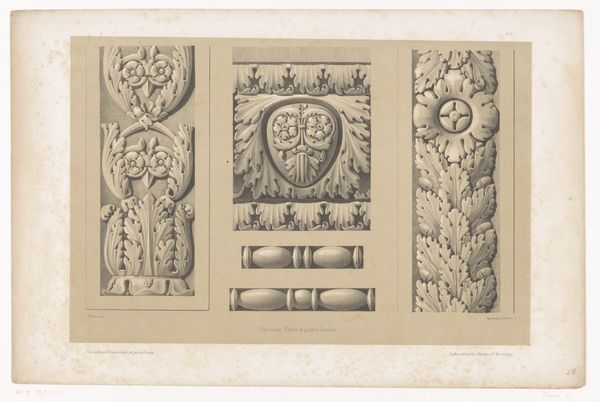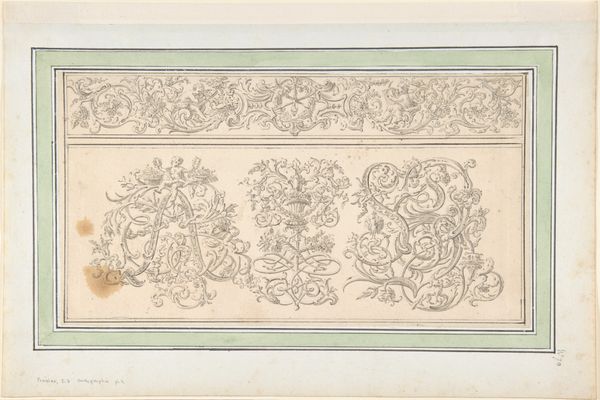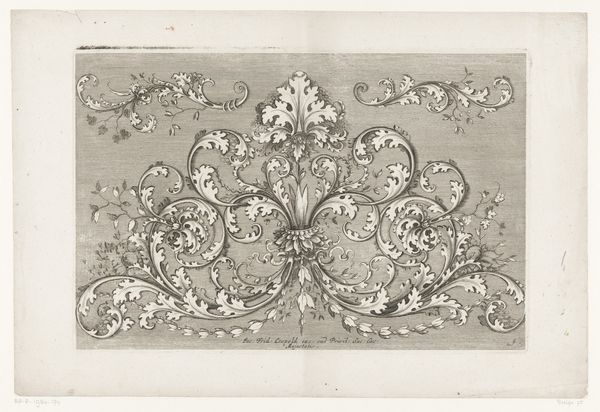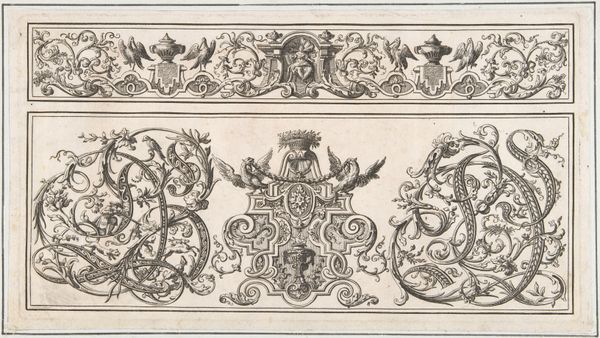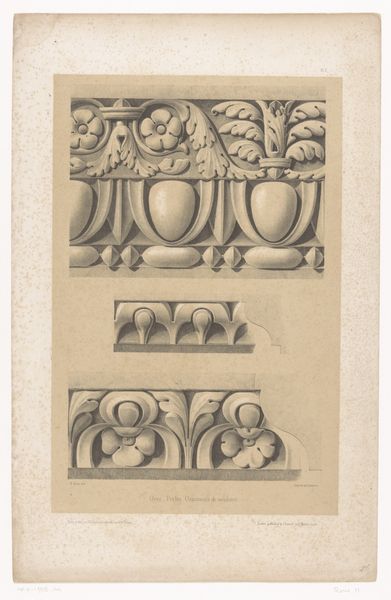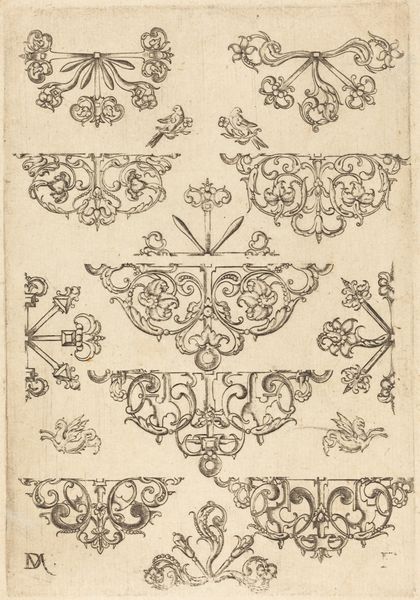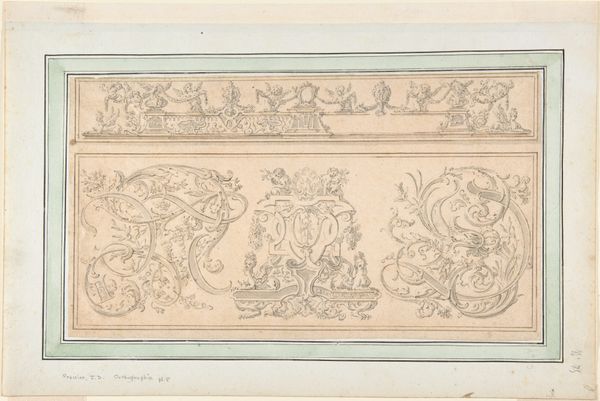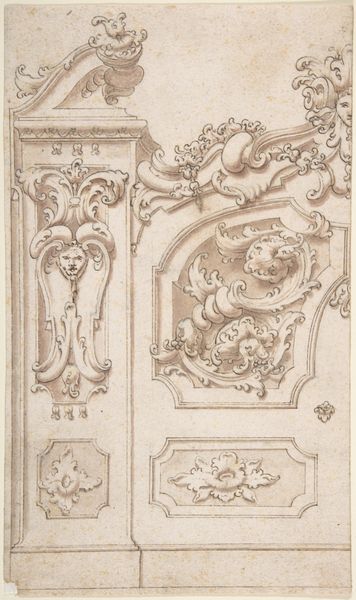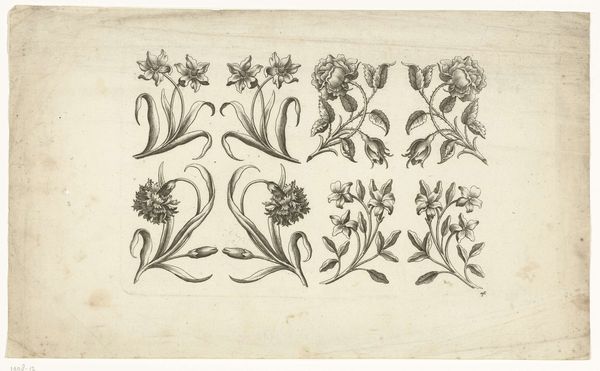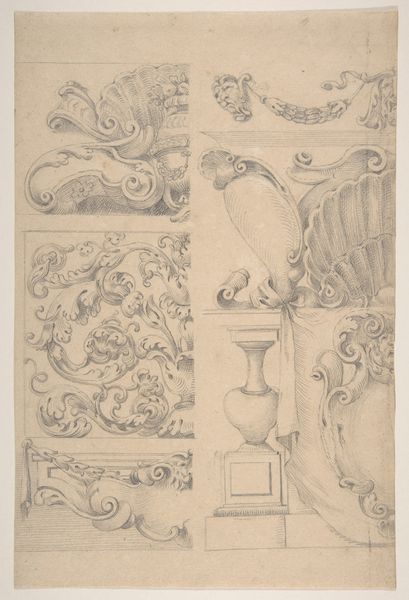
Dimensions: sheet: 3 3/4 x 9 3/4 in. (9.6 x 24.7 cm)
Copyright: Public Domain
Editor: This is "Classical Frieze with Head of Demosthenes," an 18th-century pen and watercolor drawing. It reminds me of something you’d see in an ancient Roman building. What does this frieze say to you? Curator: This piece speaks volumes about the fascination with classical antiquity during the 18th century. The frieze, designed for architectural application, reveals how artists and patrons used historical imagery to construct their own identities and assert cultural authority. Who was Demosthenes, and why might his image be significant? Editor: I think he was a Greek orator? Someone important from ancient Athens? Curator: Precisely! Demosthenes represented ideals of civic virtue and eloquent leadership, qualities admired during the Enlightenment. Notice how his depiction, framed by laurel wreaths and paired with classical ornamentation, elevates him to a symbol. How might this frieze function within a larger social context? Editor: Well, given it was meant to be part of a building, I guess it was about presenting the owner as cultured, someone connected to the glories of the past? It seems a way of claiming status through art. Curator: Exactly! It underscores how art operates not just as aesthetic expression but as a tool for social positioning. The choice of imagery, its style, and its display, all contribute to the construction of a particular identity, both personal and institutional. What did you observe and discover? Editor: I realize the image is doing a lot more than just looking "classical"— it's actively making a statement about power and social standing. Curator: It goes to show that images don’t simply reflect history, they actively participate in its making. Thanks!
Comments
No comments
Be the first to comment and join the conversation on the ultimate creative platform.

